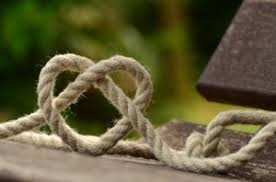Resolving Entanglements With Inquiry

Emotional pain is truth knocking on a door that has been closed too long”…..(anonymous)
As described in the previous issue, entanglements are repetitive issues or conflicts that arise in close relationships, causing emotional upset – “relational turbulence”. Though the focus in the previous discussion was on dynamics between intimate partners, entanglements also occur in relationships between family members, friends, and co-workers — in many (if not all ) of our connections with others. They are the source of much of the psychological distress in life.
Entanglements arise as a function of the emotional baggage we carry. We experience relationship in a context which includes our memories of similar situations in the past where we were hurt, disappointed, invalidated, rejected, or even abused. Because of these reactions, as the writer William Faulkner famously said, “The past is never dead. It’s not even past.” This basic fact of psychological life readily gives rise to blurring in our minds (and in our experience) about relational turbulence. In that state of mind, emotional chaos may make it hard to be clear about what happened then vs. what is happening now, and about who is doing what to whom.
Entanglements are made worse when the personal boundaries of the participants are undifferentiated, permeable, or unclear. Each person may then become liable to psychological enmeshment with the other, unproductively involved with the other’s emotional reactions. Each one is triggered by the other. In this state of mutual reactivity, both people will tend to feel on the receiving end of something unpleasant, trapped in a familiar relational box. This reciprocal entanglement in repetitive painful patterns of interaction forecloses the possibility that something new will occur.
Unfortunately, there is no simple formula for resolving these kinds of situations. The process of resolving entanglements is just that: a process. Relationship is a path we are travelling with another, and difficulties on the path are best approached with the mindset of being aware and looking for what may be constructive in going forward. I liken this process to the way we might travel through fog: by slowing down and feeling our way forward step by step. When I am in this situation, I try to wrap my mind around surrendering to the situation with the intention to find an opening. But everyone needs to find their own way. The basic aspiration is simply to bring kind attention to the surfaces with others that are painful or difficult for us.
Having recognized that we are caught up in an entanglement with someone, the experiential priority is to pause: to stop and feel. What is this experience like for you? What might it be like for the Other? Inquire deeply. This is a moment when there is something for you to discover; something that needs to be known.
Simply recognizing that we are caught in an entanglement is the essential first step. In that recognition, we move into the position of witness — analogous to what in Zen is called a “backward step.” Such moments provide the beginning of insight into the true nature of an entanglement: In order to accept the other person, we must first see more clearly what it is that their actions trigger in us. We need to ask ourselves “what feeling within myself am I having trouble being with?” To the extent that we get caught up in a reaction to someone else, we become blind to the part of the difficulty that lies within ourselves.
The relational field is an important mirror in which we have the opportunity to deeply encounter ourselves and others. Such moments are important stepping stones on each person’s path of spiritual and psychological growth. They hold the promise of all that is not yet known.
